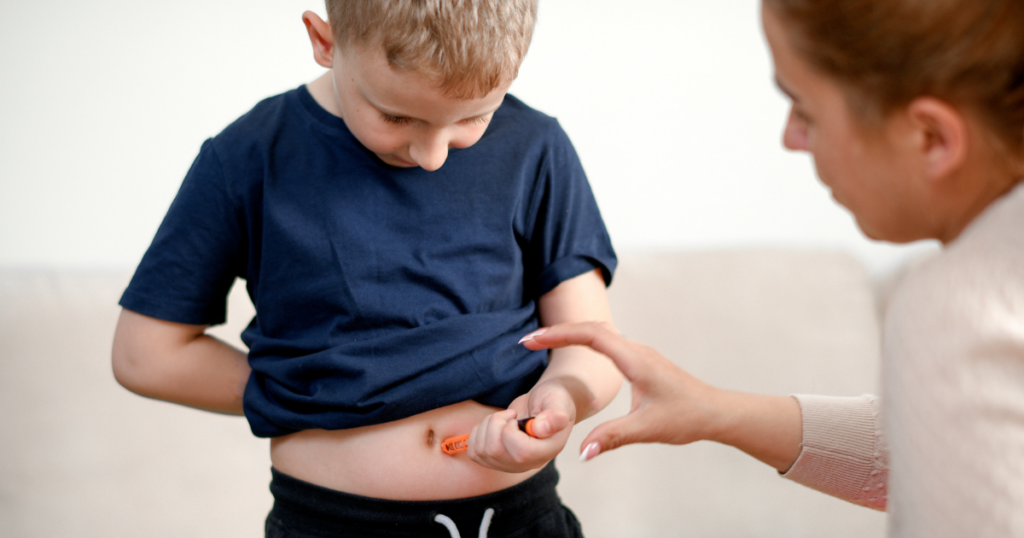Helping your child cope with injections and finger pricks

Let’s face it, nobody enjoys having injections and finger pricks. And this is especially true for young children living with type 1 diabetes, as they’re too little to really understand why they’re needed.
The early days after diagnosis can be challenging as families try to find tactics and routines that help them get through the necessary but not so fun parts of T1D management. It can feel daunting at the time, but rest assured that this will gradually become more familiar.
Here are our top tips for helping your little one to cope with injections and finger pricks.
Get creative when it’s time for injections
Depending on your child’s age and interests, you might choose to give their injection a special name – like their ‘petrol’ if they enjoy playing with toy cars, or their ‘fairy sparkles’ if they like fantasy play.
Other children might like having a toy or doll that has an ‘injection’ at the same time as them (like Rufus, the Bear with Diabetes).
Distraction can work wonders
Often the anticipation of the injection is worse than the actual pain, so taking your child’s mind off it at the right time can really help.
Some families find that well-timed music, bubbles or tickles can help.
Try some different products
There are many products designed to help reduce the fear or worries around injections, or to make them less painful. Speak to your diabetes team about which options will be best for your child and family.
- insulin pumps minimise injections, and continuous glucose monitors (CGMs) dramatically reduce the need for finger pricking
- an i-Port Injection Port is another option that reduces the number of injections without switching to an insulin pump
- Buzzy 4 Shots is a vibrating bee that interrupts the nerve signals, reducing injection pain
- the Bionix Shotblocker also works on the nerves surrounding the injection site to help reduce pain
- numbing creams are another option that work for some families – they are available from your local pharmacy.
Think about rewards and treats
Rewards are a common tool in many parenting toolboxes. Some children respond really well to rewards, and they can make unpleasant tasks much easier to manage.
The reward can depend on the child and what works for your family – some use extra device time, pocket money or treats.
Others use a star chart, adding a sticker every day the necessary tasks are completed, and leading to a treat.
Always offer your love and support
It’s vital to continue to offer your child encouragement, love and support at emotionally distressing times. Cuddles, words of reassurance and reminders of how much you love them and are proud of them are important for every child, but can especially help build and sustain your bond with your child living with T1D.
What’s next?
If your child still struggles with injections, speak to your doctor or diabetes educator about other support that might be available. It could be worth chatting with an occupational therapist, play therapist or child psychologist to help your child to build coping strategies for painful or upsetting parts of T1D management.
Read more





